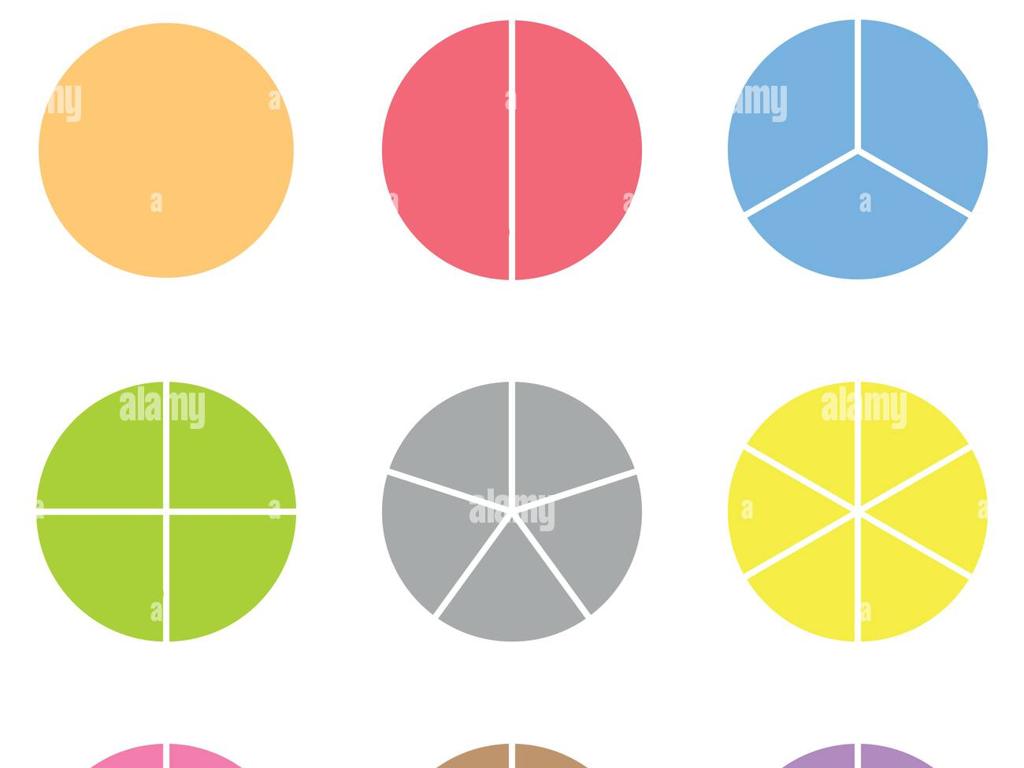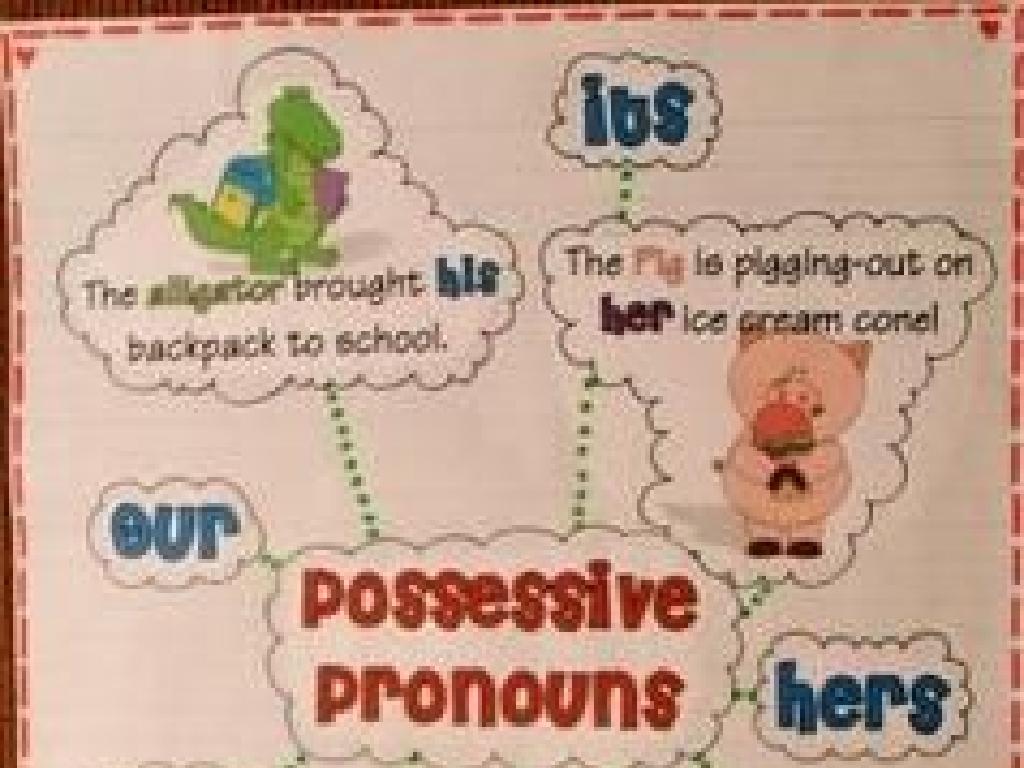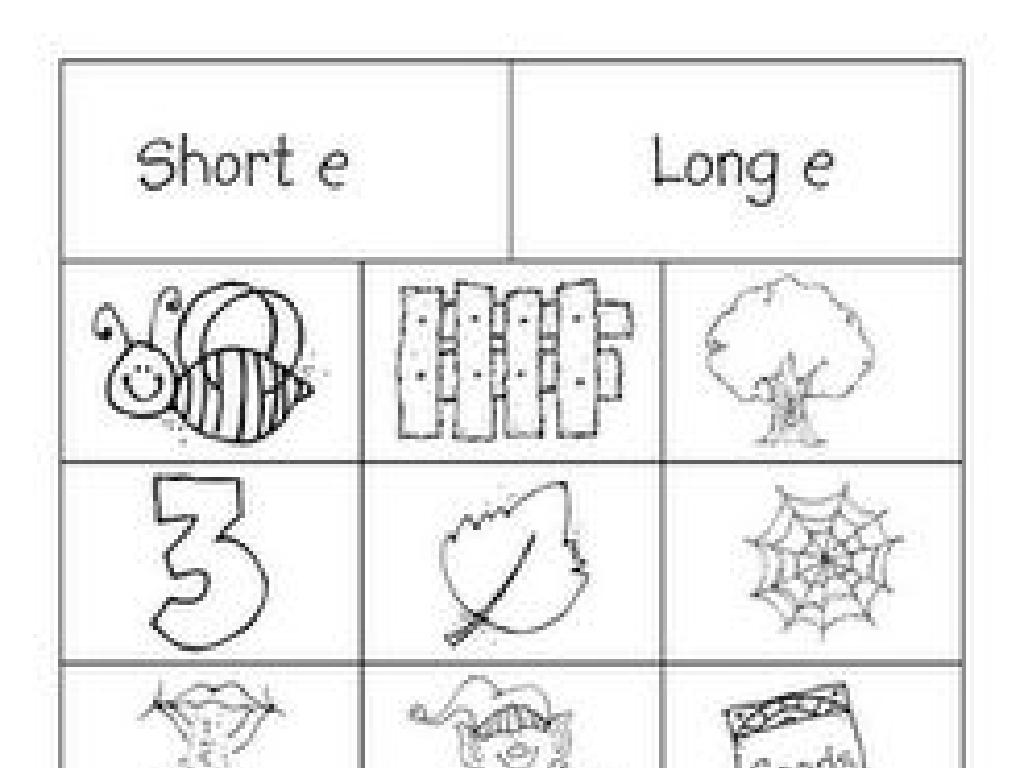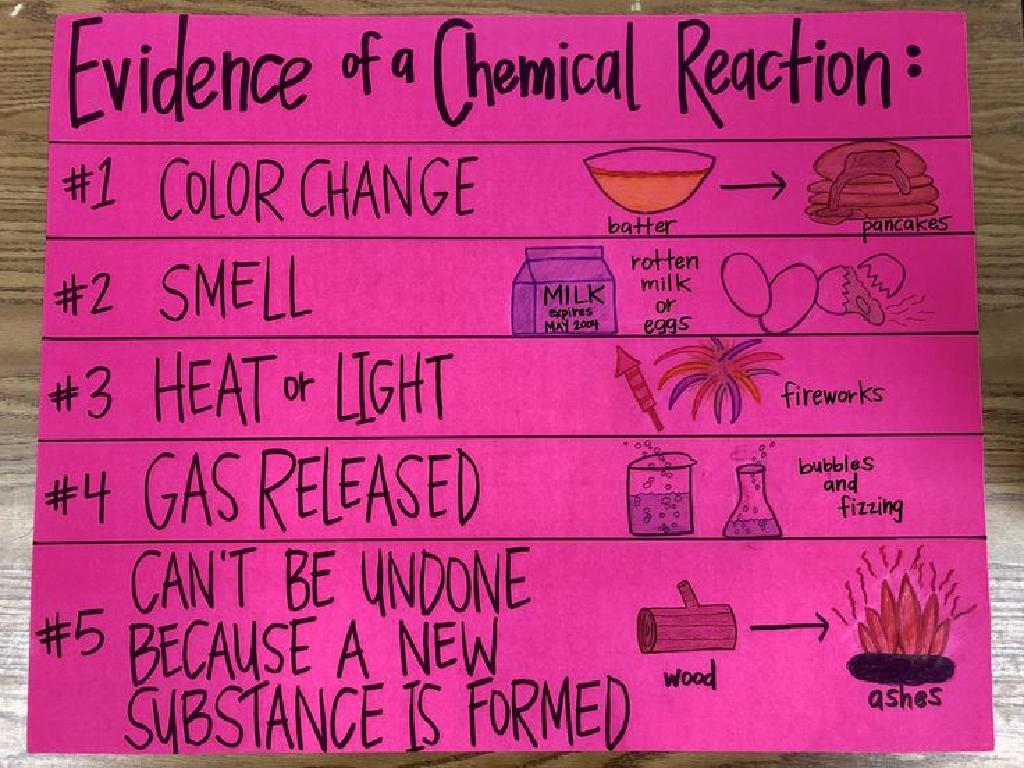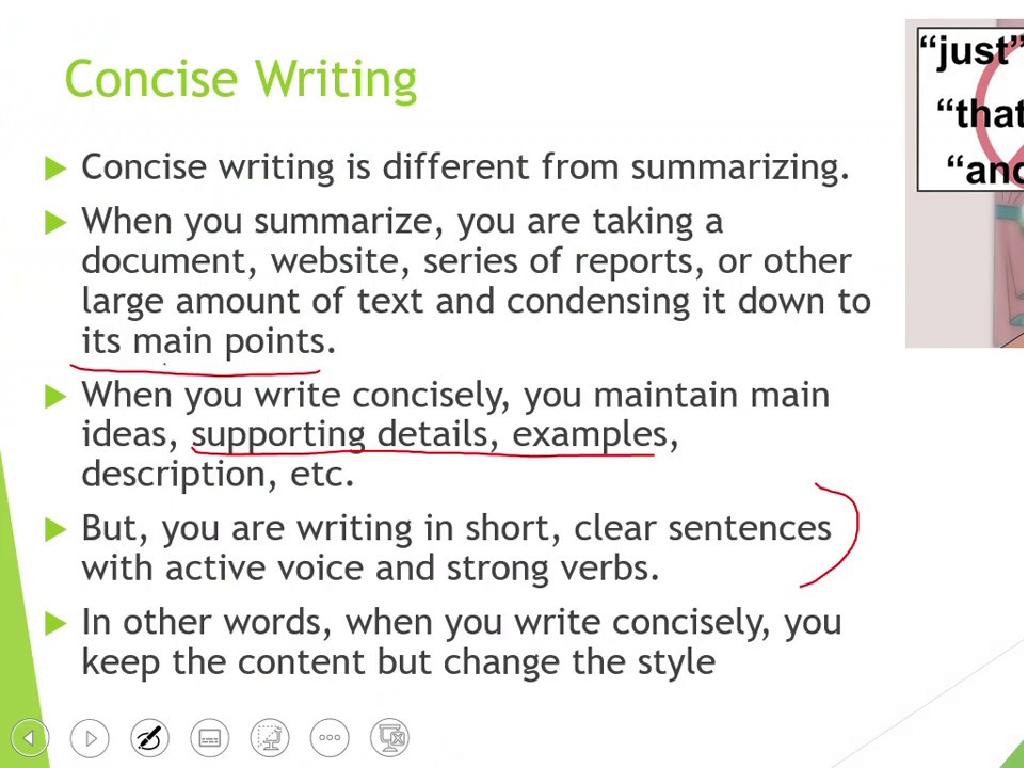Read Animal Fantasy
Subject: Language arts
Grade: Kindergarten
Topic: Read-Alone Literary Texts
Please LOG IN to download the presentation. Access is available to registered users only.
View More Content
Welcome to the World of Animal Fantasy!
– Discover animal fantasy stories
– Learn what animal fantasy is
– Stories where animals act like people
– See animals in human roles
– Like a pig saving the day or a talking rabbit
– Imagine animals talking & playing
– Think of animals wearing clothes, going to school
|
This slide introduces kindergarteners to the imaginative genre of animal fantasy, where animals exhibit human-like behaviors and characteristics. Begin by explaining the concept of animal fantasy, ensuring to keep the definition simple and relatable. Use familiar examples, such as a pig being a hero or a rabbit that can talk, to illustrate the idea. Encourage the children to think creatively about what it would be like if animals could do things that people do, like wearing clothes or going to school. This will help spark their imagination and get them excited about reading animal fantasy stories. The goal is to create a sense of wonder and anticipation for the adventures that lie within these stories.
Exploring Animal Fantasy Stories
– Animals as main characters
– Animals with human traits
– They talk, think, and solve problems like we do
– Settings: real or imaginary
– Could be anywhere, like a forest or a magical land
– Understanding animal fantasy
– It’s a story where animals do things that only humans can do
|
This slide introduces the concept of animal fantasy to Kindergarten students. Animal fantasy is a genre where animals take on the roles of main characters, exhibiting human-like behaviors such as speaking, thinking, and experiencing emotions. The setting of these stories can range from realistic environments to entirely fictional worlds. It’s important to help students recognize these characteristics in stories they read. Use familiar examples like ‘The Tale of Peter Rabbit’ or ‘Winnie the Pooh’ to illustrate these points. Encourage the children to think about their favorite animal characters and discuss what human traits they have. This will help them grasp the concept of animal fantasy and engage with the stories more deeply.
Animal Fantasy Friends
– Meet famous animal characters
– Characters like Winnie the Pooh, Peter Rabbit
– Animals with human traits
– They talk, wear clothes, have feelings
– Why animals act like people?
– It’s fun to imagine animals in our world
– Share your favorite animal story
|
This slide introduces children to the concept of animal fantasy characters, which are animals that exhibit human-like qualities. Start by presenting familiar characters from children’s literature, such as Winnie the Pooh or Peter Rabbit, and discuss the human traits they possess, such as speaking, wearing clothes, or experiencing emotions. Explain that these stories are enjoyable because they allow us to imagine animals in human situations, making the stories relatable and entertaining. Encourage the children to think about their favorite animal fantasy stories and be prepared to discuss why they like them. This activity helps develop creative thinking and comprehension skills.
Meet Squeaky Mouse!
– Who is Squeaky Mouse?
– Squeaky is a brave little mouse with big dreams.
– Explore Squeaky’s world
– Squeaky lives in a cozy hole in a large, green meadow.
– Meet Squeaky’s friends
– Squeaky has many friends like Benny Bunny and Freddie Frog.
– What problem does Squeaky face?
– Squeaky needs to find a way to save his cheese from a sneaky cat!
|
This slide introduces the main character of our story, ‘The Adventures of Squeaky Mouse’, to the kindergarten class. Start by describing Squeaky Mouse’s character traits, such as bravery and kindness. Then, paint a picture of Squeaky’s world, emphasizing the meadow’s environment and the sense of community among the animals. Introduce Squeaky’s friends by mentioning a few and their unique characteristics. Finally, set up the story’s central conflict involving Squeaky’s cheese and the antagonist, which will engage the students’ curiosity. Encourage the children to predict how Squeaky might solve the problem, fostering their critical thinking and anticipation for the story.
Reading Time: Exploring Squeaky’s World
– Listen to the story’s beginning
– Observe the pictures carefully
– Pictures help us see Squeaky’s home
– Imagine Squeaky’s adventures
– What would you do in a magical world?
– Think like you’re Squeaky
|
This slide is designed to engage Kindergarten students in an interactive read-aloud session. Begin by reading the first part of an animal fantasy story, ensuring to use expressive voices to captivate the children’s attention. Encourage the students to look at the illustrations and visualize the fantasy world the character Squeaky lives in. Ask open-ended questions to stimulate their imagination, such as what they would do if they were in Squeaky’s place. This activity helps develop listening skills, comprehension, and creative thinking. It’s also an opportunity to introduce the concept of empathy by asking students to put themselves in Squeaky’s shoes. The goal is to make reading a fun and immersive experience.
Let’s Discuss ‘Squeaky Mouse’s Adventure’
– What actions did Squeaky take?
– Did Squeaky run, hide, or ask for help?
– Squeaky’s feelings during trouble
– Was Squeaky scared, brave, or surprised?
– Relating to Squeaky’s emotions
– Sharing our similar experiences
– When have we felt the same way?
|
This slide is aimed at engaging Kindergarten students in a discussion about the animal fantasy story they read, focusing on the character Squeaky Mouse. Start by asking the students to recall what Squeaky Mouse did in the story, prompting them to think about the actions the character took. Next, explore Squeaky’s emotions and how he felt when he encountered a problem, encouraging the children to empathize with the character. Then, invite the students to connect with the story by reflecting on times they have felt similar emotions in their own lives. This activity helps develop emotional intelligence and comprehension skills. It’s also a great opportunity for students to practice expressing their thoughts and feelings in a group setting.
Create Your Own Animal Fantasy
– Pick a favorite animal
– Think about an animal you love
– Name your animal and choose a job
– Imagine if your animal could talk and work like people do
– Draw your animal at work
– Use colors and shapes to show your animal in its job
|
This activity is designed to spark the imagination of Kindergarten students by combining their love for animals with creative thinking. Encourage the students to think about their favorite animals and what unique human-like job their animal could do. This could be a dog as a firefighter, a cat as a teacher, or a rabbit as a baker. Provide them with art supplies and guide them to draw their animal in action. This exercise helps develop their creativity, storytelling, and understanding of the world around them. It also serves as an opportunity to discuss different jobs and the roles they play in our communities. Make sure to allocate time for the students to share their drawings and stories with the class to build their confidence and public speaking skills.
Class Activity: Let’s Act Out a Story!
– Today we’ll act out ‘The Adventures of Squeaky Mouse’
– Each student gets to be a character
– You might be Squeaky Mouse or his friend!
– Use your imagination to become the character
– Think about how your character moves and sounds
– Have fun pretending and acting with friends!
– Remember, acting is about having fun and learning!
|
This activity is designed to encourage creativity and imagination among students. ‘The Adventures of Squeaky Mouse’ is a story that allows children to explore animal fantasy through role-play. Assign roles to each student, ensuring everyone has a part to play. Provide simple props or costume elements if possible to enhance the experience. Encourage the children to think about how their character would behave, move, and sound. This activity helps with understanding the story, developing social skills, and expressing themselves. Possible variations of the activity could include drawing scenes from the story, creating alternative endings, or even writing a short dialogue for their character.
Wrapping Up: The Magic of Animal Fantasy
– Recap of Animal Fantasy
We learned that Animal Fantasy stories have animals that talk and act like people.
– Animals acting like humans is fun
It’s enjoyable because it lets our imagination run wild and we can imagine animals in our world.
– Share your drawings at home
– Keep exploring Animal Fantasy
Keep reading and imagining more stories!
|
As we conclude today’s lesson on Animal Fantasy, remind the students of the key points we’ve covered. Emphasize the unique characteristics of Animal Fantasy, such as talking animals and their human-like adventures. Discuss why these stories are enjoyable, highlighting the creative aspect and the joy of imagining animals in human roles. Encourage the children to share their artwork with their families to extend the learning experience beyond the classroom. Finally, inspire them to continue exploring the world of Animal Fantasy through reading and creative thinking.

